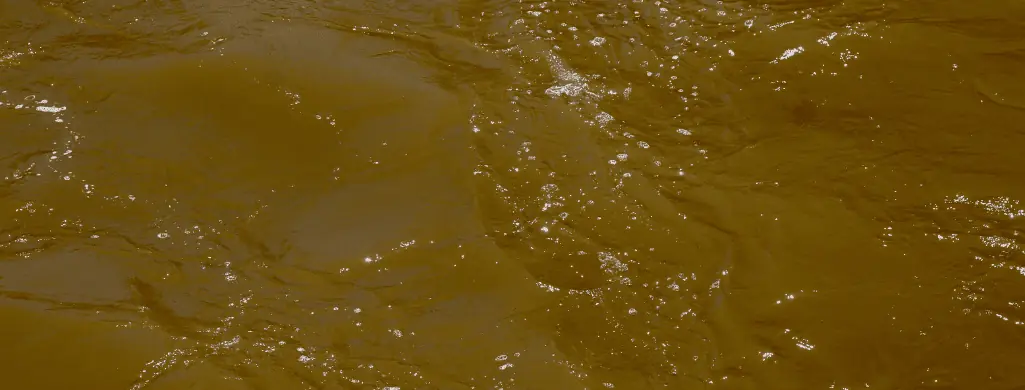Ripped fins are a common issue among betta fish.
Bettas with long, flowy fins have a higher risk of fin tearing than short-finned bettas.
While betta fish usually make a full recovery, their fins do not grow back the same as before.
If your betta fish’s fins look ripped, knowing the cause helps you prevent it from happening in the future.
14 Causes and Treatments for Ripped Betta Fins
1. Tail Biting

Some bettas bite their own tails. This usually happens in long-finned species like Rosetails and Feather Tails.
The longer fins in these betta species make swimming difficult.
If the betta gets frustrated by its lack of swimming abilities, it may bite its own tail.
Tail biting also occurs more often in bettas with more aggressive personalities.
Boredom or stress also causes tail-biting behavior.
Common signs of tail biting include:
- Rapid loss
- Clean edges
- Missing chunks
- Uneven damage
Damage from tail biting can happen overnight.
What sets tail biting apart from fin rot is the clean edges and uneven damage on the ripped fins.
Prevention and Treatment
Since tail biting usually occurs due to poor swimming abilities, check the water flow in your tank.
Ensure the water flow is slow so your betta does not have trouble swimming.
Provide betta hammocks at different levels in the tank, so your betta has places for resting.
If boredom is the issue, provide your betta with enrichment activities.
Hiding places, live plants, and toys, let your betta explore and play. This enrichment reduces boredom and helps curb tail-biting behaviors.
Unless there is an infection, there is no need for treatment. Once your betta stops biting its tail, its fins can start growing back.
2. Overcrowding

An overcrowded tank creates a hazard for your betta fish.
Without enough room for swimming, your betta may bump into objects more often. This increases the risk of injury to its fins.
Overcrowding in a community tank can make your betta feel stressed or increase aggressive behaviors. Your betta may suffer from fin injuries by fighting with its tank mates.
Prevention and Treatment
Assess your betta’s tank for signs of overcrowding.
The smallest recommended tank size for bettas is 5 gallons. A 10-gallon tank provides your betta with even more space for swimming.
Do not place too many decorations or plants in the tank. Hiding spots and plants are important but does more harm than good if your betta has no free space.
If your betta’s fins have become infected, treat it with antibiotics in a separate quarantine tank.
3. Poor Water Quality

Poor water conditions can cause fin rot and other health issues in bettas.
Leftover food and fish waste release particles as they decay. This makes your water appear cloudy.
Dirty water is a breeding ground for harmful bacteria. Bacterial infections are a common cause of fin rot.
Prevention and Treatment
Establish a weekly cleaning routine for your betta tank.
Use a gravel vacuum to clean the substrate and removing dirty water.
Install a high-quality filter and check the filter media for clogs. Live plants also help filter harmful bacteria from the water.
In the case of a bacterial infection, treat your betta with an antibacterial medication in a separate quarantine tank.
4. Rough Decor

Sharp decor and rough surfaces can tear your betta’s delicate fins.
Plastic plants have sharp edges, making them dangerous for bettas.
Long-finned bettas have a higher risk of physical injury from these fake plants and rough aquarium decorations.
Prevention and Treatment
Inspect your tank decorations for sharp edges and rough textures. If a small fish net snags on your aquarium decorations, they are not safe for your betta.
Replace artificial plants with real plants or ones made from silk.
Create a safer environment so your betta can recover from the physical damage.
5. Fin Rot

The most common cause of ragged fins is fin and tail rot disease.
Symptoms of fin and tail rot include:
- Brownish fin edges
- Bloody fin edges
- White or black fin edges
- Ragged fins
- Major fin loss
In severe cases of fin rot, the disease spreads to the body.
Bacterial diseases and fungal infections are the main causes of fin rot.
Learn more about betta fish fin rot in our dedicated article here.
Prevention and Treatment
Maintain clean water conditions at all times. Test your water parameters for issues and correct them right away.
Minor cases of fin rot do not need intervention. As long as you have clean tank water, your betta can recover on its own.
More serious cases require antibiotics or antifungal treatments in a separate quarantine tank.
6. Parasites

External parasites burrow into your betta’s skin, causing lesions and ragged fins.
The most common parasite in betta fish is ich.
Ich appears as small white spots on the body and fins. These white spots are tiny parasites feeding on your betta’s skin.
Most parasitic infections are contagious among fish.
If you notice signs of ich on your betta or its tank mates, move the infected fish to a quarantine tank right away.
Prevention and Treatment
Dirty tank water is a breeding ground for parasites. Live foods like blood worms and mosquito larvae may also contain parasites.
Keep your tank water clean and buy your betta’s live foods from reputable sources.
Quarantine new tank mates for at least four weeks before adding them to the main tank. This reduces the risk of introducing parasites or other contagious diseases to your betta.
Anti-Ich treatments consist of commercial medications containing copper sulfate, formalin, or malachite green.
Always administer medications in a separate hospital tank.
7. Genetics

Some breeds of betta fish have a higher risk of developing ragged fins.
These breeds include crowntails, half-moons, and rosetails.
Crowntail bettas have spiky tails, so spotting diseases like fin rot is challenging.
Prevention and Treatment
Maintain safe water parameters and keep sharp objects out of the tank. This lowers the risk of physical damage to these long-finned betta varieties.
Unless your betta’s fins become infected, the fish does not need treatment.
8. Old Age

As bettas get older, their fins take on a more ragged appearance.
Bettas have an average lifespan of only 2-5 years.
Once a betta reaches three years of age, it begins slowing down. Its fins start curling and looking more ragged.
Elderly bettas also have faded colors and become less active.
Prevention and Treatment
There is no way to reverse the signs of old age in your betta.
Make your betta comfortable as it enters this final stage of life.
9. Stress

Stress causes shredded fins for several reasons.
A stressed betta may become bored and revert to tail biting.
Constant stress also leads to a lack of appetite. Poor nutrition can result in ragged fins.
Prevention and Treatment
Maintain a safe and calm environment for your betta.
Provide plenty of hiding places and keep the fish tank away from loud noises and busy areas of your home.
If tank mates cause your betta’s stress, place it in a separate tank of its own.
Once your betta calms down, it can recover and grow its fins.
10. Water Chemistry Imbalances

High ammonia and nitrite levels can cause serious injury to your betta.
Your betta may suffer from burns and open wounds due to high ammonia levels.
Ammonia poisoning leads to death without prompt treatment.
Uneaten food, fish waste, and decaying organic matter increase ammonia levels in your betta tank.
Prevention and Treatment
Test your water parameters for ammonia, nitrite, nitrate, and pH levels.
Ammonia and nitrite levels above 0 ppm are dangerous for betta fish.
Regular water changes help remove these toxins from the water.
Beneficial bacteria also convert these harmful toxins into less harmful nitrate.
Move your betta to a separate quarantine tank until your water parameters stabilize.
11. Rough Handling

Rough handling can cause injury to your betta’s fins.
If you are not careful, fish nets, plastic cups, and other methods of moving your betta from its tank can tear the fins.
Prevention and Treatment
Take care when moving your betta from its tank for any reason.
Use gentle motions when scooping your betta into a small net or cup.
12. Fungal Infections

Fungal infections usually occur after a previous injury or bacterial disease.
Bettas suffering from a fungal infection may have ragged fins or open lesions.
Poor water conditions are a common cause of fungal infections.
Prevention and Treatment
Prevent fungal infections by maintaining clean water quality and treating skin wounds.
Treatment for fungal infections consists of commercial antifungal treatments. Most of the antifungal treatments contain methylene blue.
13. Aggressive Tank Mates

Aggressive tank mates in a community tank can bully your betta and rip its fins.
This kind of aggressive behavior is more common in overcrowded tanks.
Prevention and Treatment
Avoid placing fin nippers or aggressive fish species in the same tank as your betta. Never place two male bettas in the same tank.
If you see aggressive behavior, separate the fish right away.
Do not attempt a community setup in a tank smaller than 20 gallons. A 30-gallon tank is needed for most schooling species of fish and betta sororities.
Learn more about 20-gallon betta tanks here.
14. Improper Nutrition

A poor diet causes nutrient deficiencies in your fish.
These nutrient deficiencies can lower your betta’s immune system. This makes your betta more prone to bacterial and fungal infections leading to fin rot.
Overfeeding leads to leftover food decaying and releasing toxic ammonia.
Prevention and Treatment
Feed your betta a healthy diet consisting of high-quality betta pellets and live or frozen foods.
Give your betta smaller portions of food at each feeding. Offer 2-4 pellets twice per day, at least 6-8 hours apart.
Ensure your betta’s staple food contains at least 35 percent protein along with essential vitamins and minerals.
Will a Betta’s Ripped Fins Grow Back?
In mild cases of fin loss, your betta’s fins can grow back.
The recovery process may take anywhere from one week to a couple of months.
A clean environment and balanced diet are important for your betta’s health at all times. Maintaining a strong immune system boosts your betta’s recovery.
Your betta’s fins may be a different color or length than they were before.
Don’t Let Your Betta Get Ripped
Most causes of ripped fins in bettas are avoidable.
Maintaining a healthy environment goes a long way in preventing torn fins.
If your betta’s fins get ripped, understanding the cause helps you prevent it from happening again.
Bettas usually make a full recovery from fin injuries but expect some differences in the new growth.


